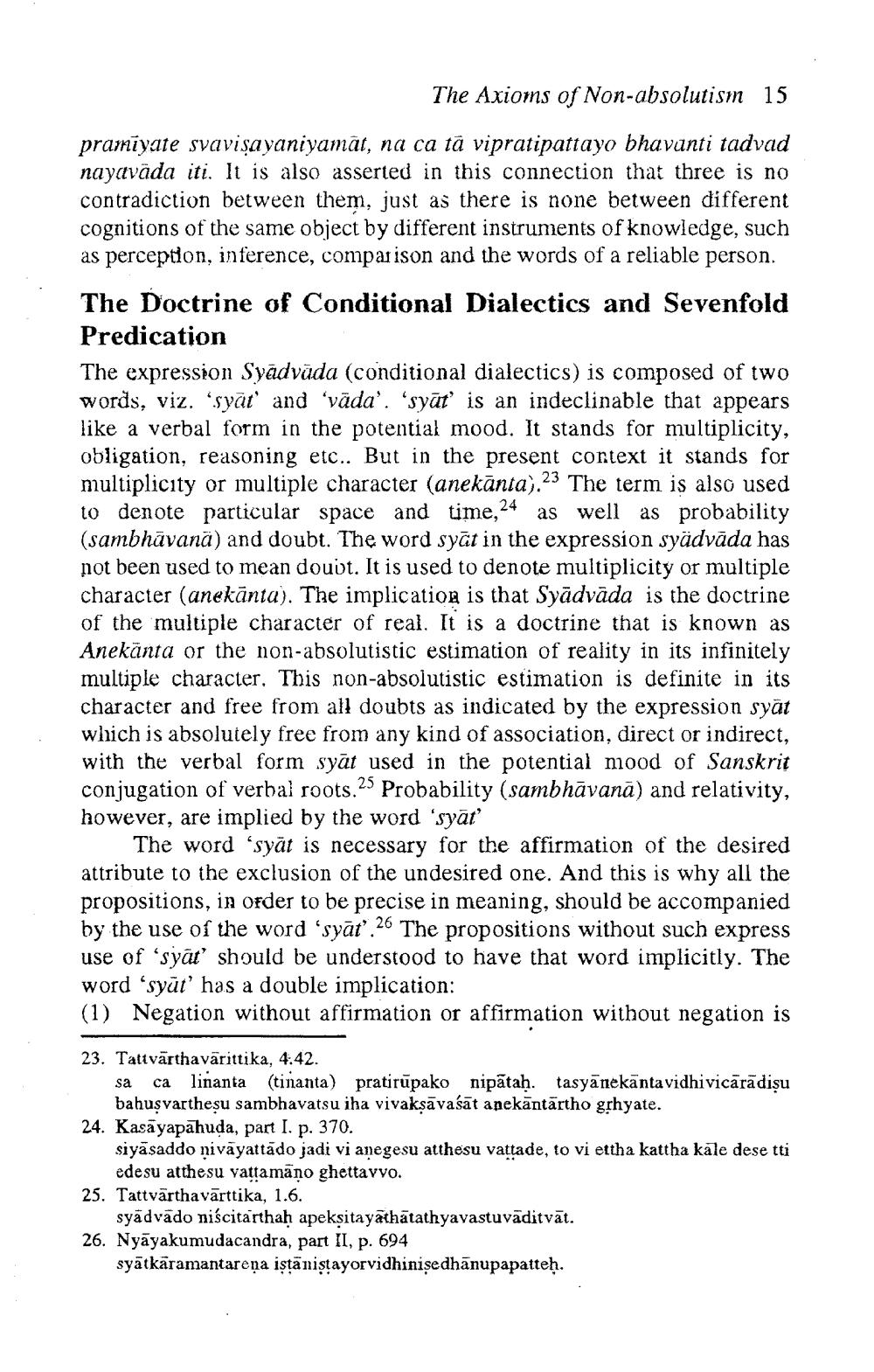________________
The Axioms of Non-absolutism
15
pramiyate svavisayaniyamát, na ca tā vipratipattayo bhavanti tadvad nayavāda iti. It is also asserted in this connection that three is no contradiction between them, just as there is none between different cognitions of the same object by different instruments of knowledge, such as perception, inference, comparison and the words of a reliable person. The Doctrine of Conditional Dialectics and Sevenfold Predication The expression Syadvūda (conditional dialectics) is composed of two words, viz. 'syat' and 'vāda'. 'syūt' is an indeclinable that appears like a verbal form in the potential mood. It stands for multiplicity, obligation, reasoning etc.. But in the present context it stands for multiplicity or multiple character (anekānta),23 The term is also used to denote particular space and time,24 as well as probability (sambhāvanā) and doubt. The word syāt in the expression syädvāda has not been used to mean doubt. It is used to denote multiplicity or multiple character (anekānta). The implication is that Syādvāda is the doctrine of the multiple character of real. It is a doctrine that is known as Anekānta or the non-absolutistic estimation of reality in its infinitely multiple character. This non-absolutistic estimation is definite in character and free from all doubts as indicated by the expression syāt which is absolutely free from any kind of association, direct or indirect, with the verbal form syāt used in the potential mood of Sanskrit conjugation of verbal roots.25 Probability (sambhāvanā) and relativity. however, are implied by the word 'syāt
The word 'syāt is necessary for the affirmation of the desired attribute to the exclusion of the undesired one. And this is why all the propositions, in order to be precise in meaning, should be accompanied by the use of the word 'syāt'. 26 The propositions without such express use of 'syāt should be understood to have that word implicitly. The word 'syūt' has a double implication: (1) Negation without affirmation or affirmation without negation is
23. Tattvärthavarittika, 4:42.
sa ca linanta (tinanta) pratirūpako nipātah. tasyānekantavidhivicārādisu
bahusvarthesu sambhavatsu iha vivaksāvasat anekāntārtho grhyate. 24. Kasāyapāhuda, part I. p. 370.
siyasaddo nivāyattādo jadi vi anegesu atthesu vattade, to vi ettha kattha kale dese tti
edesu atthesu vattamāno ghettavvo. 25. Tattvärtha vārttika, 1.6.
syadvado niścitarthah apeksitayathātathyavastuvaditvāt. 26. Nyāyakumudacandra, part II, p. 694
syātkāramantareņa istənistayorvidhiniședhānupapatteḥ.




